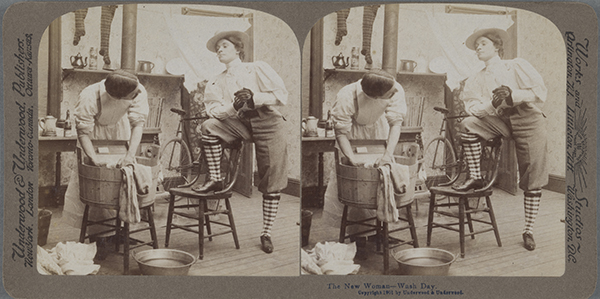Violence, Ridicule and Silence
Published in Issue 3 (May/June 2018), News, Volume 26An on-line exhibition plotting Irish women’s road to the vote, 1918.
By Jane Maxwell
The Library of Trinity College, Dublin, has taken a robust approach to the centenary of female suffrage with its collaborative on-line exhibition. As a repository for the kinds of unique original artefacts that allow history to be written, emphasis is placed in this exhibition on the negative impact on women’s history of the failure—on the part of families and institutions—to ensure that women’s records survive. This was the driving inspiration behind designing the exhibition as a collaboration among several repositories: to draw attention to the role of libraries and archival institutions in collecting and advocating for vulnerable records, which is undiminished in the age of digital sharing.
This exhibition takes the long view and starts in the eighteenth century to show similarities over centuries in efforts to prohibit female participation in public life. Women were not permitted to speak publicly in Ireland until the late 1700s; women appearing in public were attacked by social commentators, if not physically. Two centuries later, anti-suffragists were still attempting to deny them a public voice. Using ridicule to shame women into silence, to make public spaces seem threatening, was a key tool used against the suffragists. The exhibition includes startling examples of this in practice. A photograph of an anti-suffrage rally in Strabane in 1910 shows just how menacing ridicule could be. A group of men dressed as women, with masks and signs, being watched by a phalanx of grinning men and boys would have been an unnerving and effective curb to many newly politicised young women. The ridicule often suggested that female suffragists were unfeminine. Another exhibit, this time from Queen’s University Belfast, is an account of the reaction of the male students in Queen’s to a visit of English suffragist Dorothy Evans to address the student body. Part of their reaction was to set off a stink bomb and to introduce an effigy of a suffragist—a half-man/half-woman monster.
Interestingly, the principal action taken by the students who objected to the presence of a suffragist was to prevent her voice from being heard; they shouted her down for 45 minutes. The recent publication by Oxford Professor of Classics Mary Beard, Women and power: a manifesto, has drawn attention to the fact that forcing silence on women, by whatever means, has a thousand-year-old history and has always been about power. The anti-suffragists were not afraid of women’s opinions; they were afraid of power-sharing. They were also so unable to envisage a new world order as to assume that if women had access to what had been reserved for men, this would mean that men would have to—oh no!—take on the responsibilities traditionally shouldered by women. The fact that this, it was assumed, would emasculate men is eloquently reflected in a ‘humorous’ 1910 image, from Trinity’s own collections, depicting the threat to the male way of life of the New Woman (above). She is depicted wearing knee breeches, obviously about to go out on the bicycle, which is in the background. She adopts an immodest manly pose, one leg up on a chair, and smokes a cigarette. The husband in this scene wears an apron and is bending over the laundry tub. This is probably what John Dillon meant when he notoriously said that female suffrage would be ‘the ruin of our western civilisation. It will destroy the home, challenging the leadership of man as laid down by God.’

Above: ‘The New Woman—Wash Day’. The ‘New Woman’ wears the trousers (literally), smokes and adopts an immodest manly pose before heading out into public spaces on a bicycle. The man who permits this to happen is an aproned laundry-maid, so embarrassed by his circumstances as to hide his face. (TCD)
Anti-suffragism was also expressed through violence, some of which had a distinctly sexual overtone. The force-feeding of women (Irish women in England, English women in Ireland) was a frightful activity. It was experienced as a violation, although it was only when the practice was resurrected in the twentieth century that it was referred to in terms of rape. Violence against women in public had something of the same element to it—the authorities did not wish to arrest large numbers of suffragists but wished to discourage supporters. Thus the police were given a sort of Black-and-Tan-type brief of demoralising the activists through extreme violence, represented in the exhibition by Mary Earl’s account of being sexually assaulted by a policeman during a public demonstration.
The exhibition continues past the first use by women of their vote in 1918 and tells of the betrayal by the Free State of the promises to women implicit in the 1916 Proclamation and the 1922 Constitution. Trinity’s collaborators are the Hugh Lane Gallery, the National Archives, the National Library of Ireland, the National Museum of Ireland, University College Dublin, the Representative Church Body Library, the Public Record Office of Northern Ireland and Queen’s University Belfast.
Jane Maxwell is curator of Violence, Ridicule and Silence, https://www.tcd.ie/library/exhibitions/suffrage/.
















